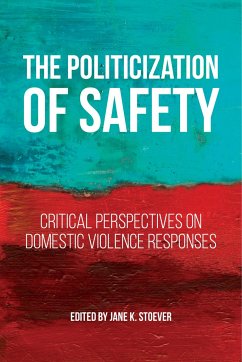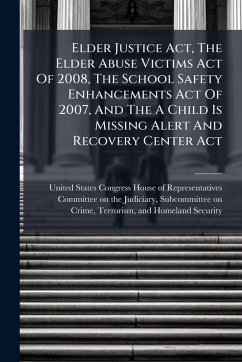
Breaking the Cycle of Violence
Versandkostenfrei!
Versandfertig in über 4 Wochen
14,99 €
inkl. MwSt.

PAYBACK Punkte
7 °P sammeln!
Children represent one-fourth of crime victims. They experience abuse from parents and caretakers, are victimized by strangers, and are exposed to violence when they witness crimes in their homes and neighborhoods. Effective, age-appropriate interactions and practices adapted to the child can reduce the trauma that child victims and child witnesses experience and minimize their long-term physical, emotional, and social problems. Recommended actions include training all criminal justice professionals who come in contact with children to identify children who are exposed to violence as victims o...
Children represent one-fourth of crime victims. They experience abuse from parents and caretakers, are victimized by strangers, and are exposed to violence when they witness crimes in their homes and neighborhoods. Effective, age-appropriate interactions and practices adapted to the child can reduce the trauma that child victims and child witnesses experience and minimize their long-term physical, emotional, and social problems. Recommended actions include training all criminal justice professionals who come in contact with children to identify children who are exposed to violence as victims or witnesses and informing criminal justice professionals of the impact of victimization on children. In addition, criminal justice professionals assigned to handle cases involving child victims and child witnesses should have more training in forensic interviewing, child development, the identification of abuse-related injuries, the emotional and psychological impacts of abuse, and legal issues related to child victims and witnesses. Moreover, child witnesses should receive the same level of victim assistance and special protections within the criminal and juvenile justice systems as do child victims. Other actions should include collaborative efforts among multiple agencies and adaptations of practices to recognize and address children's developmental stages and needs. This work has been selected by scholars as being culturally important, and is part of the knowledge base of civilization as we know it. This work was reproduced from the original artifact, and remains as true to the original work as possible. Therefore, you will see the original copyright references, library stamps (as most of these works have been housed in our most important libraries around the world), and other notations in the work. This work is in the public domain in the United States of America, and possibly other nations. Within the United States, you may freely copy and distribute this work, as no entity (individual or corporate) has a copyright on the body of the work. As a reproduction of a historical artifact, this work may contain missing or blurred pages, poor pictures, errant marks, etc. Scholars believe, and we concur, that this work is important enough to be preserved, reproduced, and made generally available to the public. We appreciate your support of the preservation process, and thank you for being an important part of keeping this knowledge alive and relevant.












